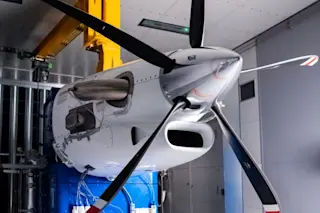Ever heard of the Ignorosphere? It’s what scientists have jokingly nicknamed the mesosphere, the third atmospheric layer from Earth’s surface. It’s always been tough for researchers to access and so has been largely ignored. But that’s about to change, thanks to work done by Project PoSSUM (Polar Suborbital Science in the Upper Mesosphere).
PoSSUM plans to use XCOR Aerospace’s suborbital rocket plane Lynx; two people fit in its flight pod. Unlike commercial planes, which can use the lower atmosphere’s oxygen to give their fuel systems a boost, suborbital rocket planes use liquid oxygen tanks to compensate for the thin air and get the thrust they need. The rocket engines can be used for thousands of flights, potentially making scientific ventures more affordable. | XCOR
While unmanned rockets, satellites and balloons — most notably NASA’s AIM satellite — have taken images of and collected data from the layer in the past, ...















